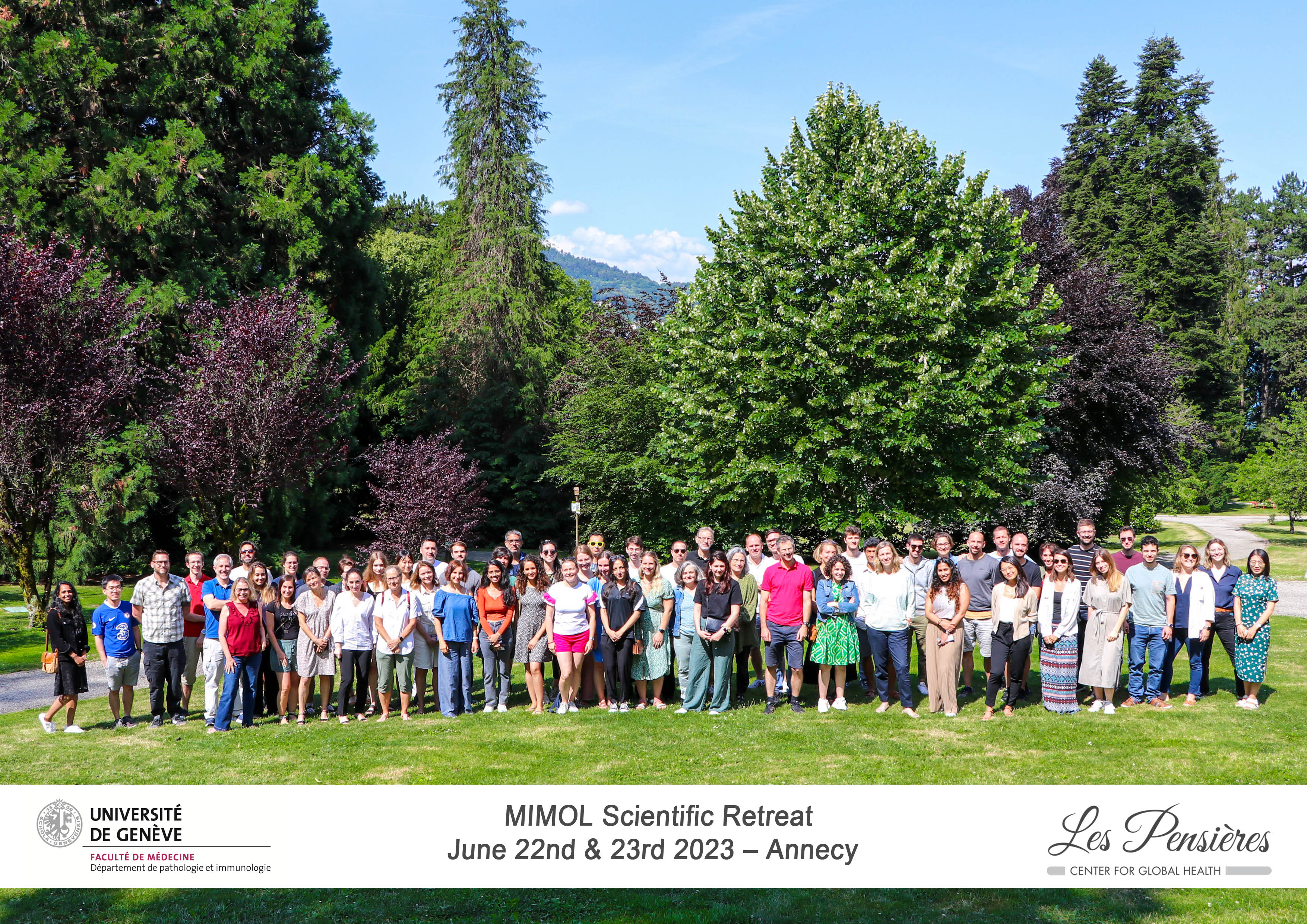
GROUPS AND WORKFIELD OF THE DEPARTMENT
Microbes are not visible to the naked eye. Nevertheless, they represent approximately 98% of the total biomass and it is estimated that our world is colonized by more than 1030 bacteria and even more viruses. In addition to bacteria and viruses, Archaea, fungi and Protozoa complete this microbiological universe. To coexist with these ubiquitous microbes, the human body has developed a sophisticated immune system, not only to defend itself against harmful organisms, but also to tolerate the presence of an astonishingly large number of bacteria. Indeed, the healthy human body requires the presence of a highly diverse microflora to digest certain nutrients, produce vitamins, stimulate the immune system, and defend its host against invading pathogens. The genetic heritage of human beings, the environment, and the ever-present microorganisms therefore shape our health. Thus the threat of infectious diseases may vary from individual to individual and, at a larger scale, presents very different pictures in the industrial and the developing world.
Several years ago, the Faculty of Medicine of the University of Geneva made research on “Host-Pathogen Interactions” one of its priorities. Research in Microbiology and Immunology encompasses a very broad field, from basic to clinical research, including the development of new powerful and rapid diagnostic tools. In addition to fostering translational research amongst clinical and fundamental research groups, the Faculty of Medicine is long known for its strength in Humanitarian Medicine, a field that faces also challenges related to microbes.
Research in our Department includes a variety of microorganisms studied in different contexts; several different bacteria, different classes of viruses, two apicomplexa parasites and yeast, are actively investigated from different perspectives. Several research groups approach the subject from the side of the host, either in fundamental research or in a clinical context. Inherent to this diversity is a wide range of approaches from classical genetics to molecular techniques including state-of-the-art nucleic acid analysis, proteomics, and imaging.
Research Groups
|
|
Affiliated Clinical Groups
|
HONORARY PROFESSORS
- Patrick Linder Honorary professor
RNA metabolism and antibiotic resistance mechanisms in Staphylococcus aureus
- Michel Strubin Honorary professor
Hepatitis B virus and regulation of gene expression
- Amos Bairoch
CALIPHO
RETIRED PROFESSOR
- Dominique Garcin
Molecular virology and innate immunity
